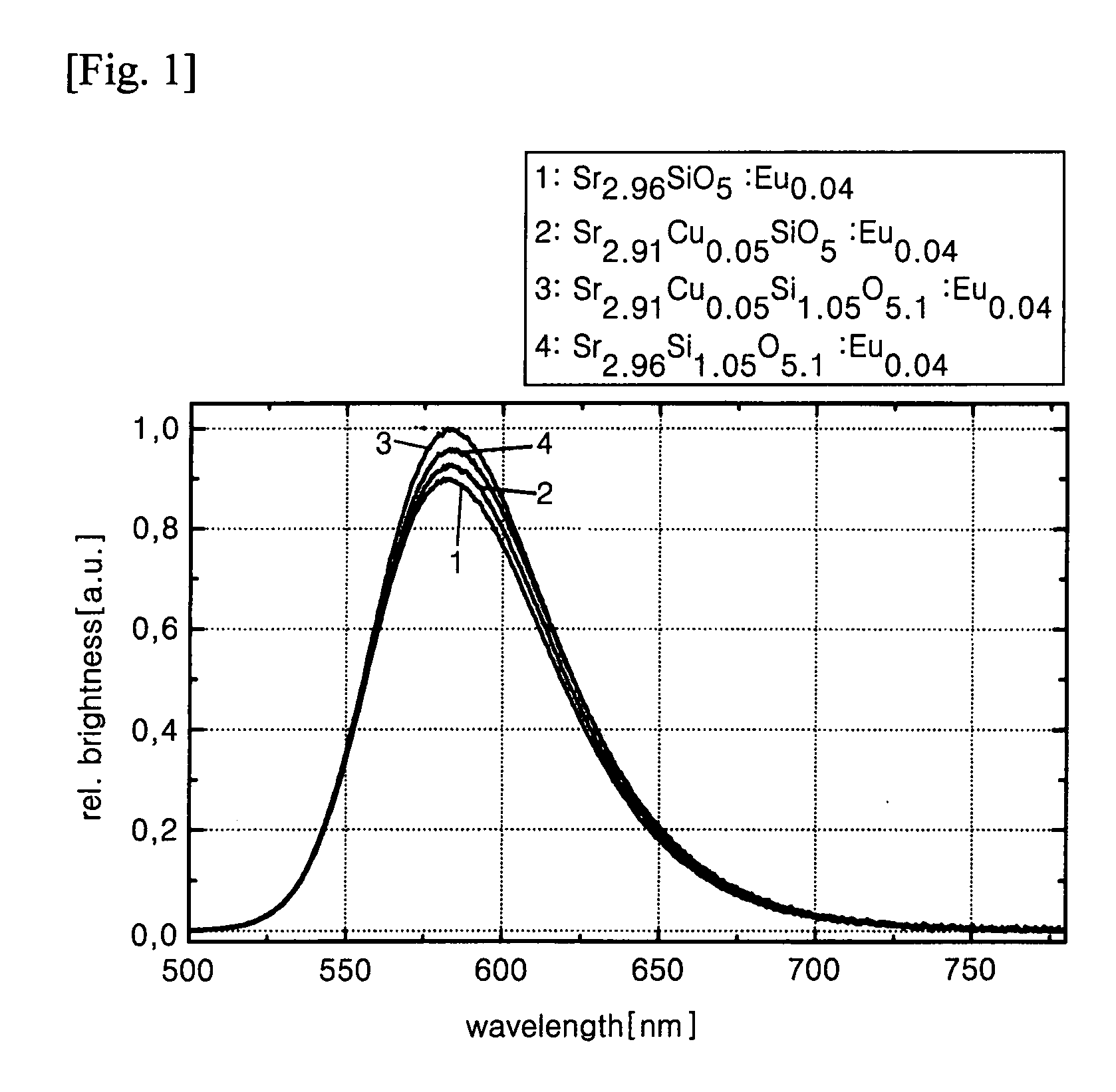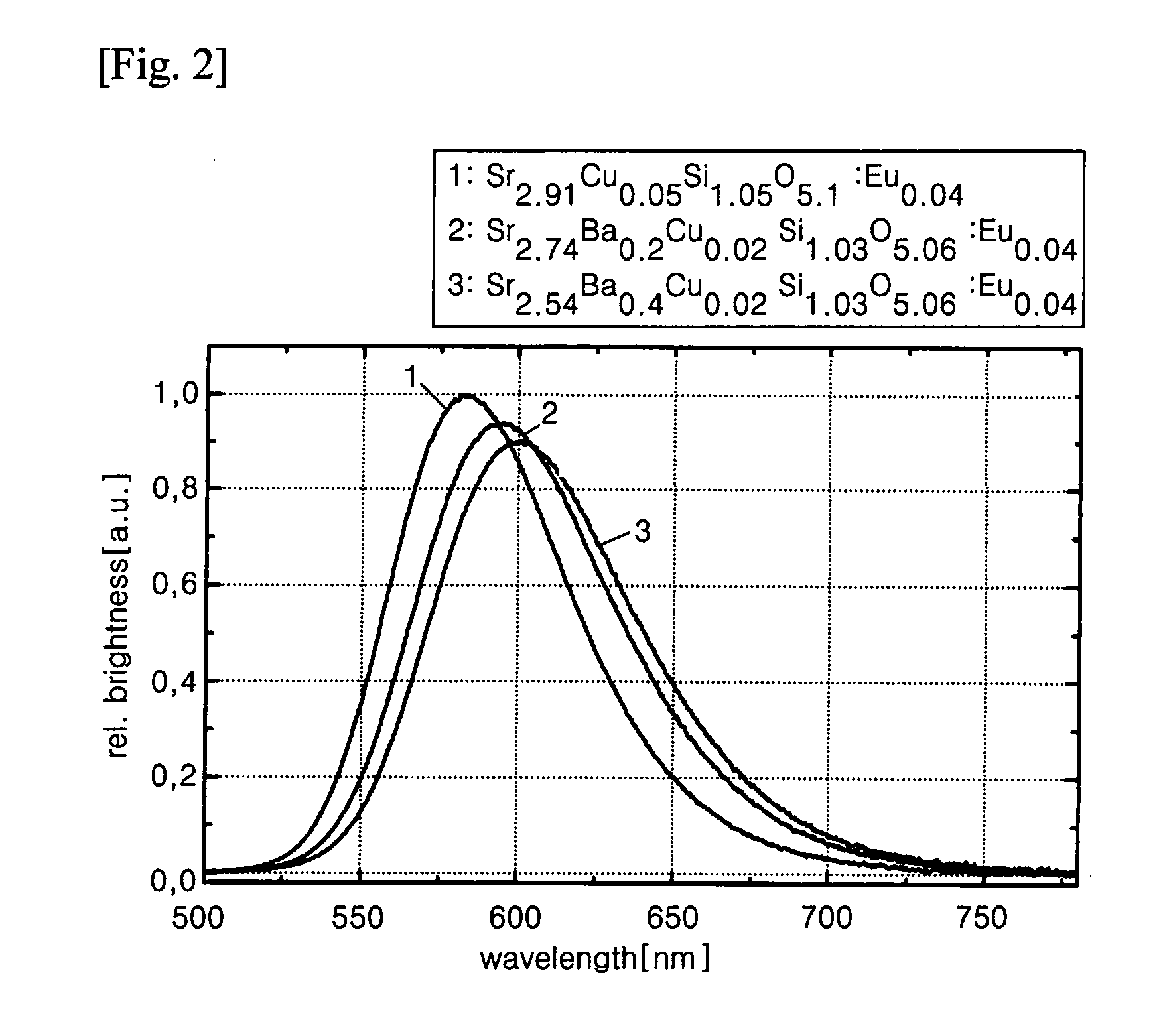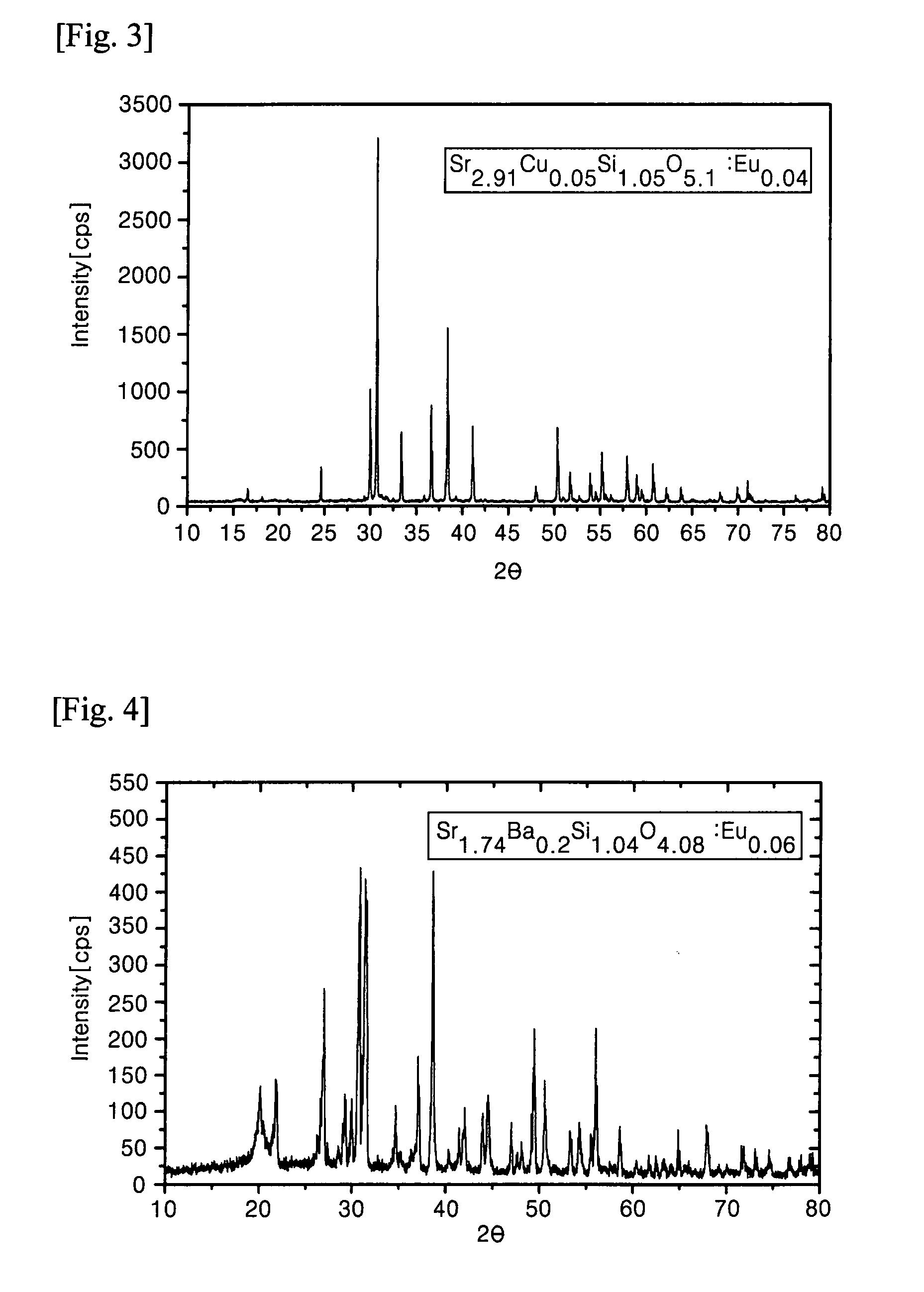Non stoichiometric tetragonal copper alkaline earth silicate phosphors and method of preparing the same
- Summary
- Abstract
- Description
- Claims
- Application Information
AI Technical Summary
Benefits of technology
Problems solved by technology
Method used
Image
Examples
example 1
[0047]Manufacturing method of the luminescent material represented following formula 2 is described.
Cu0.05Sr2.91Si1.05O5.1:Eu0.04 [Formula 2]
[0048]As starting materials for 1 Mol phosphor, CuO (3.98 g), SrCO3 (429.60 g), SiO2 (63.09 g), Eu2O3 (14.08 g) and / or any combinations thereof are used. The starting materials in form of very pure oxides as well as carbonates are mixed with the appropriate surplus of Silica together with small amounts of flux (NH4Cl—16 g). In a first step, the mixture is fired in an alumina crucible at 1,350° C. in an inert gas atmosphere (N2 or noble gas) for 2˜4 hours. After pre-firing, the material is milled. In a second step, the mixture is fired in an alumina crucible at 1,350° C. in weakly reducing atmosphere for additional 4 hours. Then, the material is milled, washed, dried and sieved. The luminescent material has an emission maximum at about 580 nm (shown in FIG. 2), and crystallizes in the tetragonal structure (shown in FIG. 3) which is clearly dif...
example 2
[0051]Manufacturing method of 1 Mol of the luminescent material represented following formula 3 is described.
CU0.02Sr2.54Ba0.4Si1.03O5.06:Eu0.04 [Formula 3]
[0052]As starting materials for 1 Mol phosphor, CuO (1.59 g), SrCO3 (375.0 g), BaCO3 (78.94 g), SiO2 (61.89 g), Eu2O3 (14.08 g) and / or any combinations thereof are used. The starting materials in form of very pure oxides as well as carbonates are mixed with a surplus of Silica together with small amounts of flux (NH4Cl—26.7 g). In a first step, the mixture is fired in an alumina crucible at 1,300° C. in an inert gas atmosphere for 2˜6 hours. After pre-firing, the material is milled again. In a second step, the mixture is fired in an alumina crucible at 1,385° C. in weakly reducing atmosphere for additional 6 hours. Then, the material is milled, washed, dried and sieved. The luminescent material has an emission maximum at 600 nm (←−582 nm) (shown in FIG. 2). The structure is analogously to example 1 as shown in table 1 and FIG. ...
example 3
[0054]Manufacturing method of the luminescent material represented following formula 4 is described.
CU0.03Sr2.92Ca0.01Si1.03O5.06:Eu0.04 [Formula 4]
[0055]As starting materials, CuO (5.57 g), SrCO3 (431.08 g), CaCO3 (1.0 g), SiO2 (61.89 g), Eu2O3 (14.08 g) and / or any combinations thereof are used. The starting materials in form of very pure oxides as well as carbonates are mixed with a surplus of Silica together with small amounts of flux (NH4—24 g). In a first step, the mixture is fired in an alumina crucible at 1,300° C. in an inert gas atmosphere for 2˜6 hours. After pre-firing, the material is milled again. In a second step, the mixture is fired in an alumina crucible at 1,370° C. in weakly reducing atmosphere for additional 6 hours. Then, the material is milled, washed, dried and sieved. The luminescent material has an emission maximum at 586 nm.
[0056]In the following table 2, Relative brightness of various non stoichiometric Copper Alkaline Earth Silicates at 25° C., 100° C.,...
PUM
 Login to View More
Login to View More Abstract
Description
Claims
Application Information
 Login to View More
Login to View More - R&D
- Intellectual Property
- Life Sciences
- Materials
- Tech Scout
- Unparalleled Data Quality
- Higher Quality Content
- 60% Fewer Hallucinations
Browse by: Latest US Patents, China's latest patents, Technical Efficacy Thesaurus, Application Domain, Technology Topic, Popular Technical Reports.
© 2025 PatSnap. All rights reserved.Legal|Privacy policy|Modern Slavery Act Transparency Statement|Sitemap|About US| Contact US: help@patsnap.com



